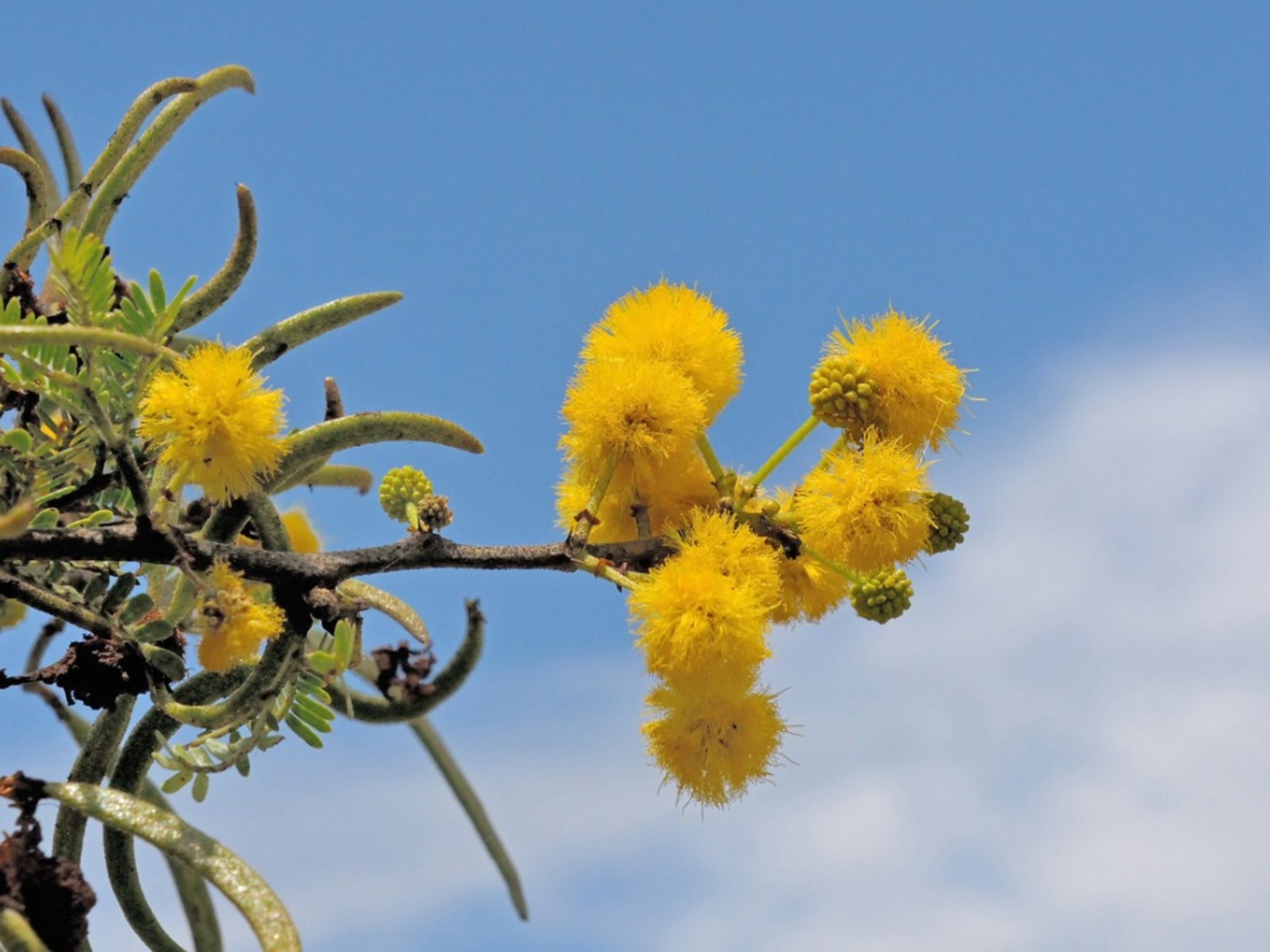Sweet Thorn Information: What Is An Acacia Sweet Thorn Tree


Sweet thorn is an attractive and fragrant tree native to southern parts of Africa. Read on to find out more about this lovely landscape tree that grows well under the most difficult southwestern conditions.
Sweet Thorn Information
In their native South Africa, Acacia karoo trees are beneficial wildlife trees. Birds nest in them and the flowers attract insects to feed the birds. Ten species of butterflies depend on the Acacia sweet thorn for their survival. The sweet gum that oozes from wounds in the bark is a favorite food of many species of wildlife, including the lesser bushbaby and monkeys. Despite the thorns, giraffes love to eat their leaves. Growers in Africa sell the gum as a gum Arabic substitute and use the beans as goat and cattle forage. As a legume, the tree can fix nitrogen and improve the soil. It is often used to help restore ruined mine land and other degraded soil. The leaves, bark, gum, and roots are used in a wide range of traditional remedies.
Growing Acacia Karroo Trees
Sweet thorns (Acacia karroo) are highly ornamental plants that you can grow as a multi-stemmed shrub or prune to a tree with a single trunk. The plant grows 6 to 12 feet (2-4 m.) tall with a similar spread. In spring, the tree blooms with an abundance of fragrant, yellow flower clusters that resemble pompoms. The loose canopy allows dappled sunlight through so that grass can grow right up to the trunk. Sweet thorns make attractive specimens and you can also grow them in containers. They look good on patios and decks but produce fierce thorns, so plant them where they won't come in direct contact with people. A row of closely planted sweet thorn shrubs makes an impenetrable hedge. The trees are useful in helping to control erosion and they grow well in poor, dry soil. Sweet thorns are hardy in U.S. Department of Agriculture plant hardiness zones 9 through 11.
Sweet Thorn Plant Care
Sweet thorn trees grow well in any soil as long as it is well-drained. It thrives in dry, arid soils found in the southwestern U.S. Since it is a legume that can fix nitrogen, it doesn't need nitrogen fertilizer. For the best growth, water newly planted trees regularly until they are established and growing. It helps to water the tree monthly during extended periods of drought, but under normal conditions, it doesn't need supplemental irrigation. If you want to grow the plant as a single stemmed tree, prune it to a single trunk while it is young. Other than pruning, the only maintenance a sweet thorn tree needs is clean-up. It drops hundreds of 5 inch (13 cm.) brown seed pods in the fall.
Gardening tips, videos, info and more delivered right to your inbox!
Sign up for the Gardening Know How newsletter today and receive a free copy of our e-book "How to Grow Delicious Tomatoes".

Jackie Carroll has written over 500 articles for Gardening Know How on a wide range of topics.
-
 My Homemade Orchid Fertilizer Always Brings More Blooms – Here's The Easy Recipe That Transforms Plants
My Homemade Orchid Fertilizer Always Brings More Blooms – Here's The Easy Recipe That Transforms PlantsScientist-turned-gardener Mary Ellen Ellis shares her tried-and-tested DIY orchid fertilizer recipe, plus more ingredients to try for healthy, happy plants.
By Mary Ellen Ellis
-
 Looking For Plants To Give You The Soft And Fuzzies? Try These 5 Fuzzy Leaf Plant Options
Looking For Plants To Give You The Soft And Fuzzies? Try These 5 Fuzzy Leaf Plant OptionsLovers of texture, drama, silver foliage and tactile plants will adore these special sensory garden additions. These fuzzy leaf plant options will leave you all aglow
By Susan Albert